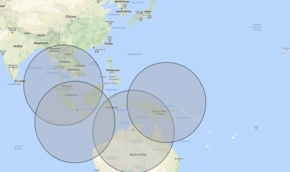IMO China and Australia aren't really likely to fight each other in the near term. We really have nothing to fight about.
What is more likely is to compete for influence and diplomatic power in SEA and the Pacific. Australia wants to ensure that China doesn't acquire any bases in the oceanic region and preferably none in the SEA region beyond what it already has. Its about getting to and holding the high ground.
For that you have to be credible and have real credible capability. We have multiple states looking at becoming nations at risk. West Pupua has increasing frequency of violent events. PNG seems to be on a knife edge. What happens when 65 year old Frank retires as democratic dictator of Fiji is unclear, Bougainville has its independence issues, as does New Caledonia. Malaysia has the worlds oldest elected leader and is on the verge of a failed state. Philippines has a large range of issues.
Even as Australia and the US are on the same side, we are likely to have very difference approaches to regional security, regional capability building and regional alliances. Australia also is more likely to find a positive relationship and position with China in the region, as we aren't polar opposites.
Our amphibious capability is a key way Australia can tangibly help other nations. not just in HDAR, but through incorporating and operating with other nations in a more peer/joint focused way. Something that has been very clear since the acquisition of the LHD's is that the region sees Australia building such capability is a very positive thing.
What is more likely is to compete for influence and diplomatic power in SEA and the Pacific. Australia wants to ensure that China doesn't acquire any bases in the oceanic region and preferably none in the SEA region beyond what it already has. Its about getting to and holding the high ground.
For that you have to be credible and have real credible capability. We have multiple states looking at becoming nations at risk. West Pupua has increasing frequency of violent events. PNG seems to be on a knife edge. What happens when 65 year old Frank retires as democratic dictator of Fiji is unclear, Bougainville has its independence issues, as does New Caledonia. Malaysia has the worlds oldest elected leader and is on the verge of a failed state. Philippines has a large range of issues.
Even as Australia and the US are on the same side, we are likely to have very difference approaches to regional security, regional capability building and regional alliances. Australia also is more likely to find a positive relationship and position with China in the region, as we aren't polar opposites.
Our amphibious capability is a key way Australia can tangibly help other nations. not just in HDAR, but through incorporating and operating with other nations in a more peer/joint focused way. Something that has been very clear since the acquisition of the LHD's is that the region sees Australia building such capability is a very positive thing.

